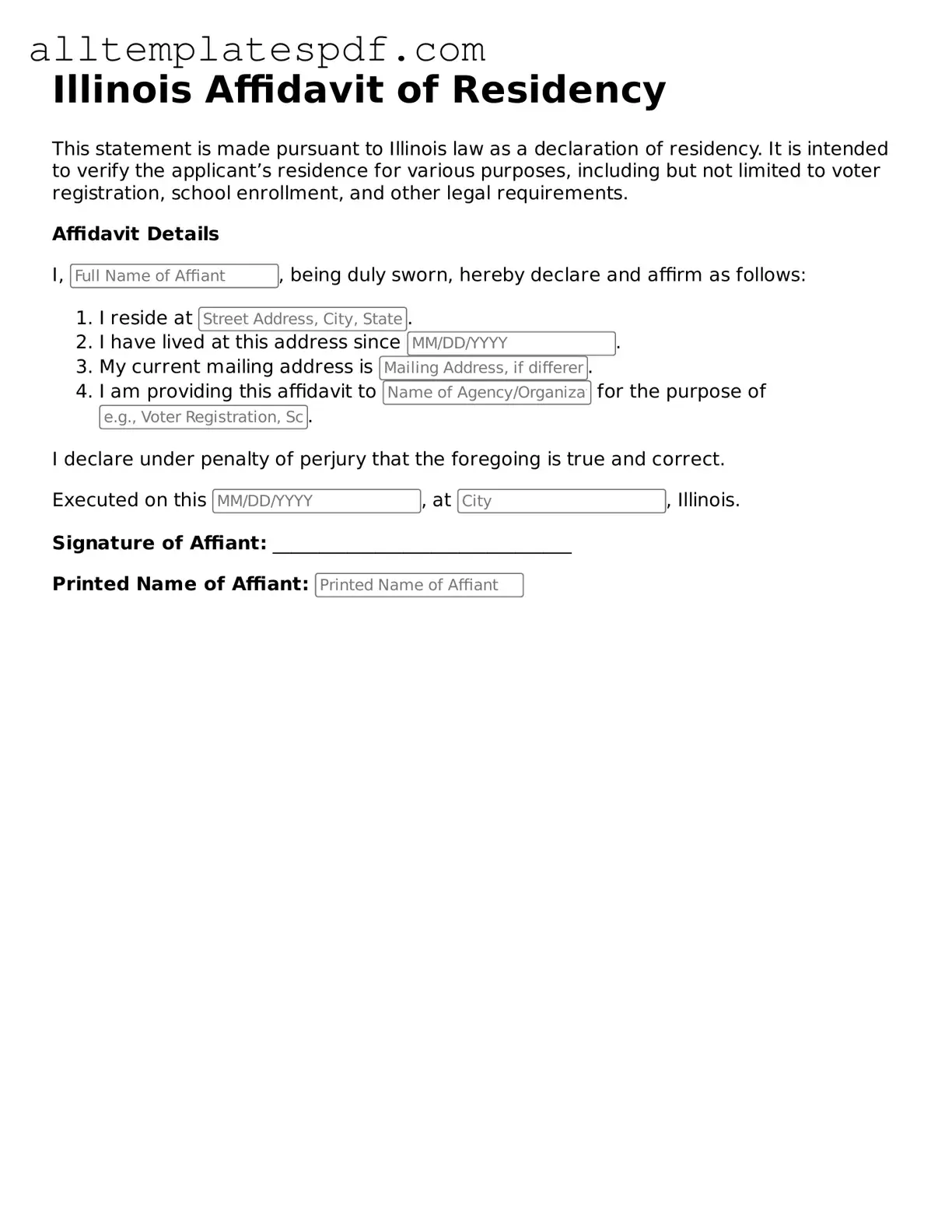Filling out the Illinois Affidavit of Residency form can seem straightforward, but many people encounter pitfalls that can complicate the process. One common mistake is providing incorrect or incomplete personal information. It’s essential to ensure that your name, address, and other identifying details are accurate. A simple typo can lead to delays or even rejection of the form.
Another frequent error involves the failure to sign the affidavit. This form requires your signature to verify that the information you provided is true. Omitting your signature may render the document invalid, so double-checking this detail is crucial.
Some individuals mistakenly assume that the affidavit does not need to be notarized. In Illinois, a notary public must witness your signature to authenticate the document. Without this notarization, the affidavit may not be accepted by the relevant authorities.
People often overlook the need for supporting documentation. The affidavit may require you to attach proof of residency, such as utility bills or lease agreements. Failing to include these documents can lead to complications and may necessitate resubmission of the form.
Another mistake is not reading the instructions carefully. Each section of the affidavit has specific requirements, and misunderstanding these can lead to incomplete submissions. Taking the time to read the instructions thoroughly can save you from potential headaches down the line.
Additionally, some individuals neglect to keep a copy of the completed affidavit for their records. This can be a problem if questions arise later about the information submitted. Keeping a copy ensures you have a reference point if any issues come up.
Lastly, not submitting the form in a timely manner can be a significant oversight. Each situation may have specific deadlines, and missing these can result in complications. Staying organized and aware of deadlines is essential for a smooth process.
